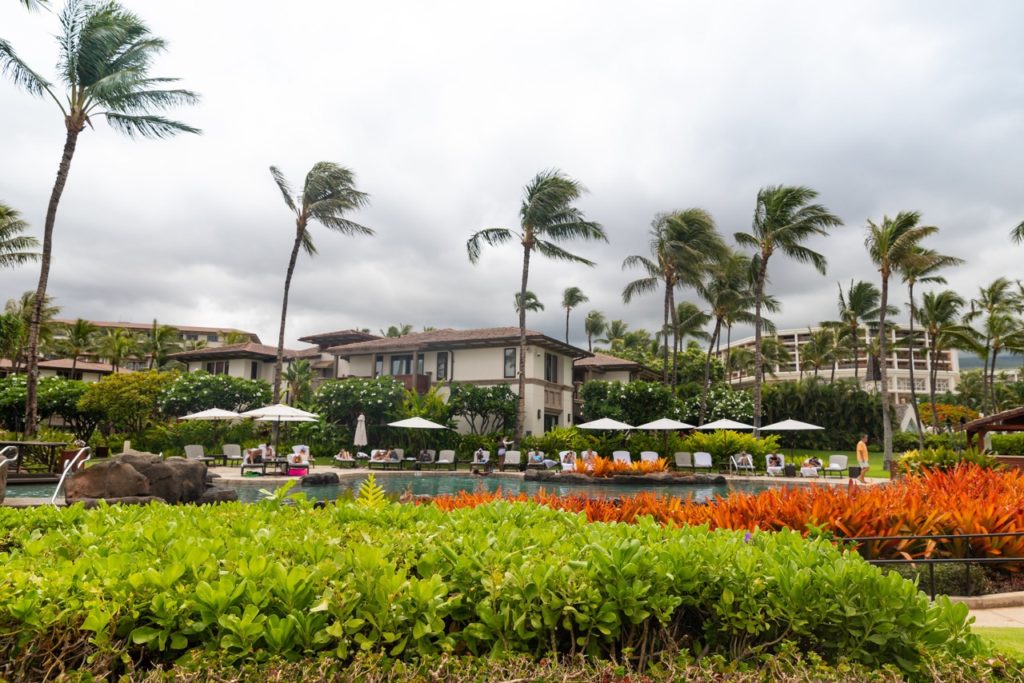
Talk about splurging.
Last June, Western Pacific Fishery Management Council members trumpeted a new Main Hawaiian Islands bottomfish stock assessment that allowed them to recommend to the National Marine Fisheries Service a 60 percent increase in the annual catch limit for the fishery that targets several species of fish known as the “Deep 7.”
With the bulk of the fishery based on Maui, and with National Oceanic and Atmospheric Administration assistant administrator Chris Oliver scheduled to attend, council executive director Kitty Simonds chose to hold the meeting where the council made its recommendation on the island — at the Wailea Beach Resort Marriott, to be specific — rather than in Honolulu.
In an unusual move, she also chose to hold the council’s Scientific and Statistical Committee (SSC) meeting a couple of days beforehand at the same venue.
According to records obtained by Environment Hawai‘i, the council spent nearly $276,000 on its June 2018 meeting, those for its standing committees (also held at the resort), and the SSC. That’s more than double what it cost to hold meetings for those same bodies three months earlier in Honolulu, about $116,000. The SSC met March 12-14, and the council and its standing committees met the following week.
On April 29, NOAA – the federal agency that underwrites Wespac – completed a Freedom of Information Act request Environment Hawai‘i filed last year regarding the council’s meeting expenditures. NOAA provided bills for the venues where the council hosted its meeting and its Fishers’ Forum, a regular part of council meetings where council members and staff meet with members of the local fishing community over food and drinks. NOAA also provided lists of all meeting participants who received compensation, or who had their transportation and/or accommodations paid for by the council, as well as a list of the total airfare, ground transportation, and per diem/reimbursement costs for both the Honolulu and Maui meetings.
In a February 2019 story based on NOAA’s initial responses to our two FOIA requests, we estimated the cost of the Maui meetings to be nearly $300,000. That amount included expenses likely incurred by Honolulu-based employees of various branches of NOAA who normally attend and participate in council meetings.
In total, the council paid transportation and airfare costs for 46 people for the Maui meetings and 20 for the Honolulu meetings.
In addition to choosing to meet for eight days (including a one-day break) at an expensive, outer-island resort, the documents NOAA provided in April suggest, the council bloated expenses for the Maui meeting in a number of other ways, including the following:
• It paid its SSC and Advisory Panel members who were present in Maui double the compensation they were paid for the Honolulu meeting. This may be due to the fact that both the SSC and council meetings on Maui were held just a day apart, resulting in an extended stay for anyone who wished to attend both. SSC meetings are usually held in the council’s Honolulu office about a week ahead of the full council meeting. There was just one AP member – Layne Nakagawa – who attended the SSC meeting, while most of the other AP members present attended one or more days of the council meeting. The only SSC member who attended the council meeting was David Itano of Honolulu.
• It paid to fly out and host nearly a dozen Advisory Panel members, even though no advisory panel meetings were held on the island. Only two panel members attended the Honolulu meeting that was reviewed for comparison purposes.
• Nakagawa, the AP member who attended both the SSC and council meetings on Maui, had his accommodations paid for by the council, even though he lives on the island.
• The council also paid travel and lodging for former council chair Roy Morioka, who at the time did not serve on any council body, although he did aid in the research used in the new bottomfish stock assessment.
• It paid for 48 rooms, yet the list of people who were provided accommodations totaled only 45.
• It paid for an average of five nights per person for the Maui meeting, compared to an average of four nights per person for the Honolulu meeting.
Council staff did not respond to questions about these charges by press time.
At the June council meeting, Simonds reported that the organization’s budget was pretty much the same as it had been in previous years, with one exception. “We’re extra happy” Oliver was able to find an additional $1 million for all of the fishery management councils to share, Simonds said.
“Our percentage is 11 precent. We come after the North Pacific, and Pacific, and New England [councils]. Thank you very, very much, Chris. I really appreciate it. Hopefully, you can do the same next year and add another million.”
Oliver said he would do whatever he could.
(See our follow-up article, Fishery Council Struggles to Justify Expenses for 2018 Meeting at Maui Resort.)
— Teresa Dawson

Leave a Reply